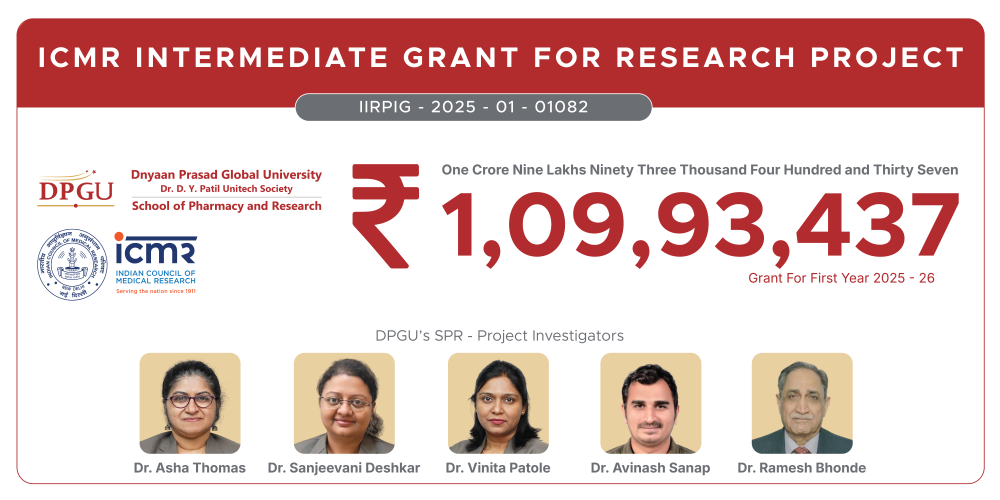Medical Device Classification and FDA Approval: What Startups Need to Know
April 30, 2025 | Wednesday | Views | By Aishwarya Varpe, Associate- Regulatory Services, Venture Center
For many innovators, the United States represents a key market, being the world’s largest for medical devices. However, entering the US market requires navigating the US Food and Drug Administration’s (FDA) stringent regulatory landscape, where accurate device classification is crucial. To assist innovators, the Regulatory Information and Facilitation Center (RIFC) at Venture Center, Pune has released a whitepaper early this year that offers practical insights, featuring examples of devices developed by Venture Center-supported startups to illustrate how medical devices are categorised based on risk.
Under the FDA, the Center for Devices and Radiological Health (CDRH) oversees the regulation of medical devices. It ensures that patients and healthcare providers have timely and sustained access to safe, effective, and high-quality medical devices, including radiation-emitting products.
To assist innovators, the Regulatory Information and Facilitation Center (RIFC) at Venture Center has released a whitepaper titled "Classification of Medical Devices in the US", providing a simplified step-by-step guide in the form of a flowchart on determining device classification (Class I, II, III), regulatory pathways (510(k), De Novo, PMA), and key compliance requirements with examples. The whitepaper also offers practical insights, featuring examples of devices developed by Venture Center-supported startups to illustrate how medical devices are categorised based on risk.
Determining whether a product qualifies as a medical device and identifying its risk classification become important when navigating the FDA approval process. A product is classified as a medical device only if it meets the FDA’s definition, which can be ambiguous and often requires further evaluation. This is because medical devices may closely resemble drugs, combination products, or wellness products, each following distinct regulatory pathways. Accurately classifying a device is crucial as it determines the level of regulatory scrutiny and the appropriate market approval process.
Fallout of Misclassification
Misclassifying a medical device can lead to additional efforts, increased costs of rework and delays in the approval process. A clear example provided by the CDRH is the distinction between infant diapers and adult diapers. An adult diaper is designed for individuals with incontinence, a medical condition that affects bladder or bowel control. Since it is intended to manage a health issue, the FDA classifies it as a medical device. In contrast, an infant diaper is a standard part of baby care, as infants naturally lack bladder or bowel control. Because it does not treat a medical condition, it is not classified as a medical device. In fact, according to FDA regulation 21 CFR 876.5920, adult diapers fall under the category of “protective garments for incontinence”—designed to protect clothing from leaks. The regulation even makes it clear that this does not include infant diapers. The whitepaper further explores similar examples, demonstrating how a product’s intended use and the manufacturer’s claims can impact its classification as a medical device.
The US FDA Classification System employs a risk-based approach to classify medical devices into three categories: Class I, Class II, and Class III, with Class I (Low risk) having the least regulatory requirements and Class III (High risk) undergoing the most rigorous review through the Premarket Approval (PMA) pathway. Devices may require a 510(k) clearance, a De Novo request, or PMA submission, depending on their novelty and risk. The classification is determined by the intended use of the device, its indications for use, and the potential risks it poses to patients and users. FDA applies regulatory controls (general controls and special controls), which are essential for ensuring the safety, effectiveness, and quality of medical devices.
Once the product is confirmed to be a medical device, the next step is to identify similar devices. The FDA product classification database, an online tool, allows manufacturers to search for devices by name, intended use, or Product Code. This database provides information on the class of a device, applicable regulations, and any predicate devices already cleared by the FDA to confirm the risk-based classification. Venture Center’s whitepaper serves as a guide for innovators, offering insights on how to navigate these pathways effectively.
Reclassification of Medical Device
Classifying a medical device and obtaining approvals is not the final step. A device may be reclassified in case of updates that affect its safety and performance. The change in classification depends upon the updated risk profiles due to technological, non-technical modifications and the recent clinical data concerning the subject device. Reclassification ensures that the modified device remains subject to appropriate regulatory controls and continues to meet safety and effectiveness standards. If the FDA receives a petition for reclassification, it may refer the request to a device classification panel for review. After evaluating all relevant information, the FDA will issue an order either approving or denying the petition. Before 2012, if a medical device received a "not substantially equivalent" (NSE) decision, it was automatically placed in Class III. However, after section 513(f)(2) of the FD&C Act was amended by Section 607, an alternative reclassification process allows such devices to be classified under De Novo, and this process does not require a 510(k) submission first. Between 2020 and 2024, the FDA has reclassified seven medical devices through this alternate process.
With evolving technologies like Software as a Medical Device (SaMD) and AI-driven healthcare tools, regulatory landscapes are continuously adapting. New regulatory frameworks and flexible approaches to reclassification will continue to play an important role in fostering innovation. Manufacturers must stay informed about FDA guidance and classification databases to navigate compliance efficiently and align with the latest regulatory expectations.
As regulatory pathways evolve to accommodate emerging technologies, they are expected to become more streamlined and tailored, enabling faster market entry while maintaining patient safety, device quality and efficiency. Understanding these evolving trends will be critical for manufacturers as they navigate the future regulatory landscape.
Aishwarya Varpe, Associate- Regulatory Services, Venture Center
(With inputs from Akash R Dhade, Chetna Dharmawat-Dabi and Dr Pinky Raychaudhuri at Venture Center)










